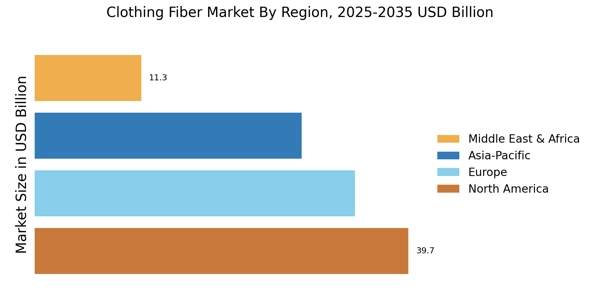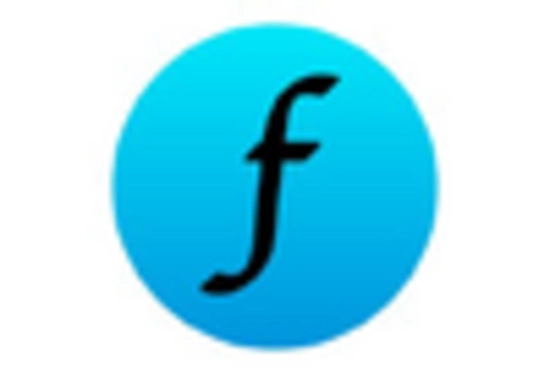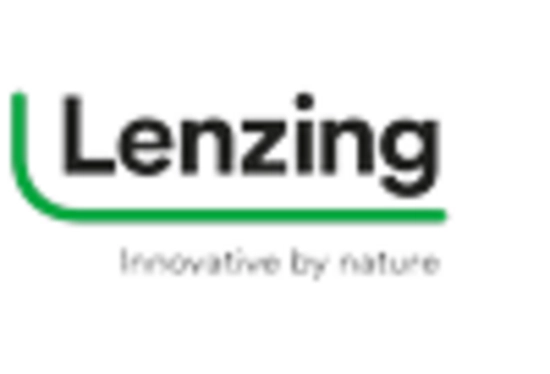The Clothing Fiber Market is currently characterized by a dynamic competitive landscape, driven by innovation, sustainability, and technological advancements. Major players such as Lenzing AG (Austria), BASF SE (Germany), and DuPont de Nemours, Inc. (United States) are actively shaping the market through strategic initiatives. Lenzing AG (Austria) focuses on sustainable fiber production, leveraging its expertise in wood-based fibers to cater to the growing demand for eco-friendly textiles. Meanwhile, BASF SE (Germany) emphasizes innovation in chemical solutions for textiles, aiming to enhance performance and sustainability in fiber production. DuPont de Nemours, Inc. (United States) is also investing in advanced materials, particularly in the development of high-performance fibers that meet the evolving needs of consumers. Collectively, these strategies indicate a shift towards a more sustainable and technologically advanced market environment.
In terms of business tactics, companies are increasingly localizing manufacturing and optimizing supply chains to enhance efficiency and responsiveness to market demands. The Clothing Fiber Market appears moderately fragmented, with a mix of established players and emerging companies vying for market share. The collective influence of key players is significant, as they drive innovation and set industry standards, thereby shaping the competitive structure of the market.
In August 2025, Lenzing AG (Austria) announced a partnership with a leading fashion brand to develop a new line of sustainable clothing made from TENCEL™ fibers. This collaboration underscores Lenzing's commitment to sustainability and positions the company as a leader in eco-friendly textile solutions. The strategic importance of this partnership lies in its potential to enhance brand visibility and consumer appeal, aligning with the growing trend towards sustainable fashion.
In September 2025, BASF SE (Germany) launched a new range of biodegradable fibers aimed at reducing environmental impact. This initiative reflects BASF's focus on sustainability and innovation, as it seeks to address consumer concerns regarding the environmental footprint of textiles. The introduction of biodegradable fibers could significantly influence market dynamics, as brands increasingly prioritize sustainable materials in their product offerings.
In July 2025, DuPont de Nemours, Inc. (United States) expanded its portfolio by acquiring a startup specializing in smart textiles. This acquisition is strategically important as it allows DuPont to integrate advanced technology into its fiber offerings, potentially leading to the development of innovative products that enhance functionality and performance. This move indicates a broader trend towards the integration of technology in textiles, which may redefine consumer expectations and market standards.
As of October 2025, the Clothing Fiber Market is witnessing trends such as digitalization, sustainability, and the integration of artificial intelligence in production processes. Strategic alliances among key players are increasingly shaping the competitive landscape, fostering innovation and collaboration. Looking ahead, competitive differentiation is likely to evolve, with a pronounced shift from price-based competition to a focus on innovation, technology, and supply chain reliability. Companies that can effectively leverage these trends will likely secure a competitive edge in the rapidly changing market.


















Leave a Comment